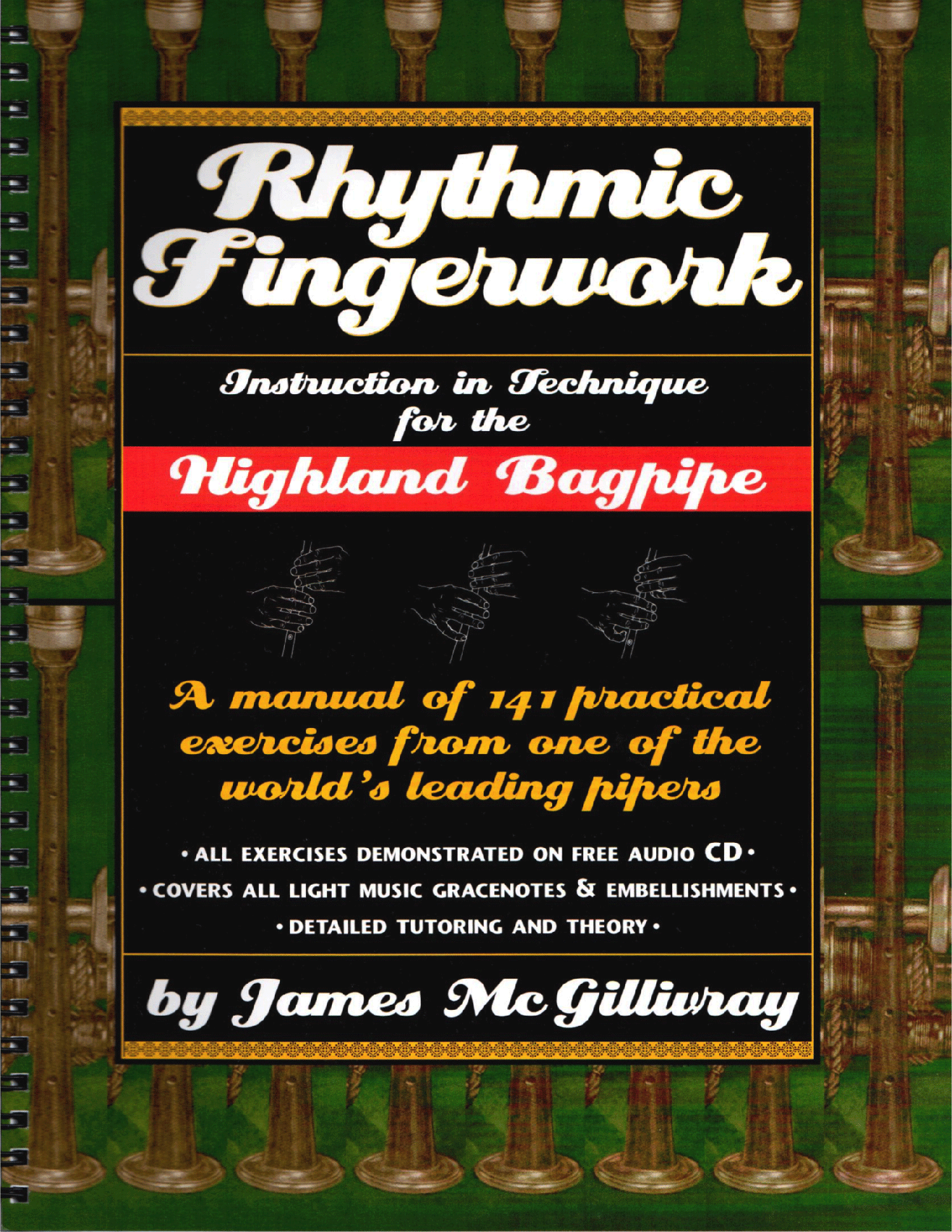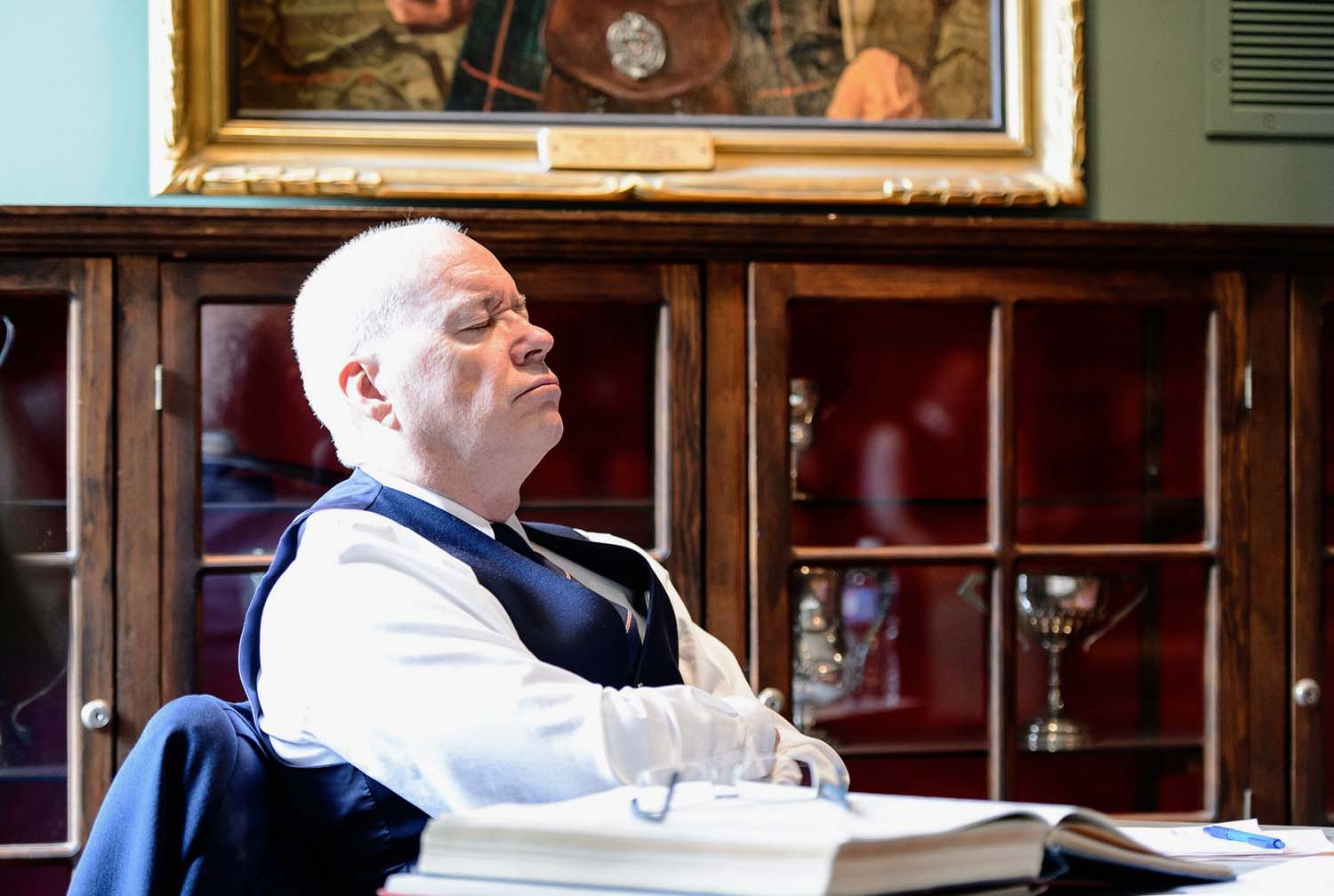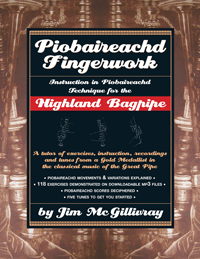Rhythmic and Piobaireachd Fingerwork go to yet another reprinting
 The vast majority of printed piping publications have a single print-run, and even then many copies are never sold, but the famous piper Jim McGillivray’s Rhythmic Fingerwork is about to go into another printing and has sold more than 23,000 copies since it debuted in 1998.
The vast majority of printed piping publications have a single print-run, and even then many copies are never sold, but the famous piper Jim McGillivray’s Rhythmic Fingerwork is about to go into another printing and has sold more than 23,000 copies since it debuted in 1998.
The book was the first of its kind, intended to help the experienced piper get better with more than a hundred carefully crafted exercises designed to elevate the player’s technical prowess.
With the success of Rhythmic Fingerwork, McGillivray came out with Piobaireachd Fingerwork, a ceol mor counterpart in 2013.
“I first conceived of Rhythmic Fingerwork in about 1995,” McGillivray said. “I had learned the basic concepts and some of the exercises from Ed Neigh back in the 1970s. They had served me well during my developmental years, and finger exercises had been a big part of my later practice regimen. By the 1990s I had three-quarters of the book in my head, and had come to realize very few people were teaching technique the way I had learned it and was teaching it.”
The book took off in its first year, the initial print-run of 3,000 sold out and the publication put back on the press for additional sales, which have continued consistently ever since.

With most of the marketing for Rhythmic Fingerwork being word-of-mouth, McGillivray saw the publication spread around the world, to the point where it is now the benchmark for all technical guides for pipers.
Out of curiosity I asked a class of about 20 attendees who owned Rhythmic Fingerwork. Fourteen people raised their hands.
Piobaireachd Fingerwork naturally has not seen the same level of sales, but “the book sells steadily as well. It took me a couple of years to write this one. It had a bit more scope, and by this time I was also running McGillivray Piping in addition to teaching at St. Andrew’s College, so it was a busy time.”
 While the books have become staples, each new cohort of pipers brings a new set of consumers a few years into their learning the instrument.
While the books have become staples, each new cohort of pipers brings a new set of consumers a few years into their learning the instrument.
“I frequently get email feedback about my books from readers,” he added. “I think my most gratifying day came during a workshop in the States many years ago. I had brought some copies of Rhythmic Fingerwork to sell and they weren’t selling. I was puzzled. Out of curiosity I asked a class of about 20 attendees who owned Rhythmic Fingerwork. Fourteen people raised their hands. After that I quit dragging a pile of books to workshops!”
The biggest-selling printed piping tutorial book is believed to be the “Green Tutor,” created by Seumas MacNeill for the College of Piping in the 1950s.
Jim McGillivray is a frequent contributor to pipes|drums. He was the subject of a pipes|drums Interview in 2019, his second.
Related
![]() Jim McGillivray: the pipes|drums Interview II – Part 1
Jim McGillivray: the pipes|drums Interview II – Part 1
December 4, 2019
 Jim McGillivray: the pipes|drums Interview II – Part 2
Jim McGillivray: the pipes|drums Interview II – Part 2
January 3, 2020
 Jim McGillivray: the pipes|drums Interview II – Part 3
Jim McGillivray: the pipes|drums Interview II – Part 3
February 19, 2020
 Jim McGillivray: the pipes|drums Interview II – Part 4
Jim McGillivray: the pipes|drums Interview II – Part 4
April 7, 2020
 Jim McGillivray: the pipes|drums Interview II – Part 5
Jim McGillivray: the pipes|drums Interview II – Part 5
May 25, 2020

NO COMMENTS YET